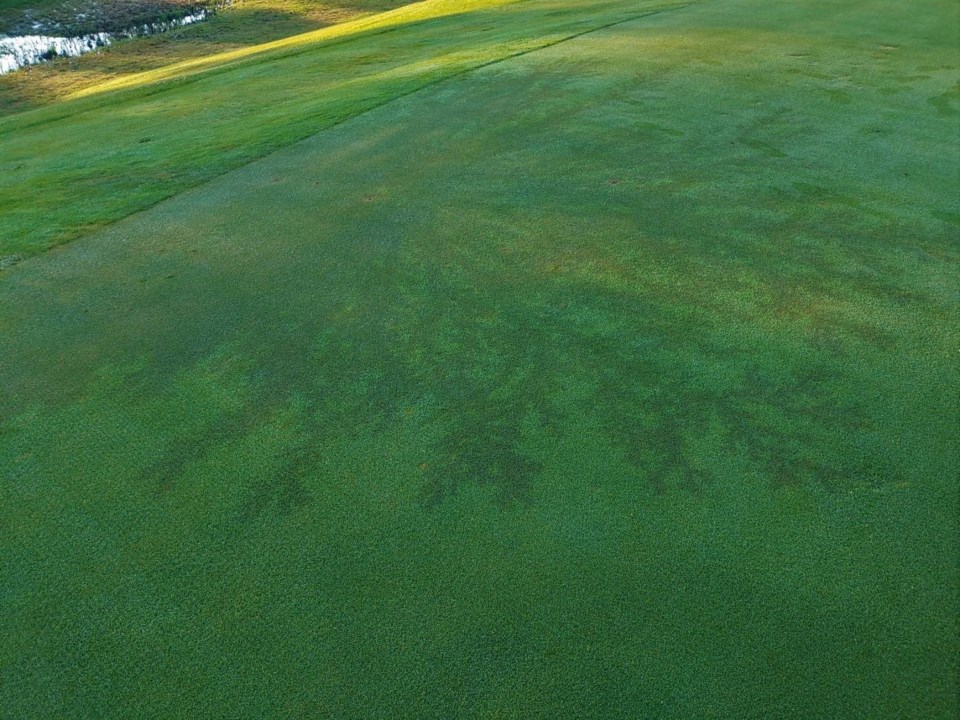You’ve heard of striking gold.
On Thursday night, one particular lightning bolt struck green in Moose Jaw — the seventh green at the city’s Lynbrook Golf Club.
“I think it looks like a snowflake, if you really see it,” said greens supervisor Owen Morhart of the morning-after burn marks left by the strike.
It was one of more than 23,000 lightning strikes in a thick Thursday-night storm system that passed over the south and east portions of Saskatchewan, according to Environment Canada.
Meteorologist Terri Lang pinpointed the approximate strike time to 10:24 p.m., based on the weather agency’s lightning tracking system. It shows more than five bolts of electricity getting direct hits on the golf course.
Morhart first stumbled upon the seventh-hole ruins Friday morning while doing his regular post-storm clean-up, squeegeeing water off the greens.
“(I) recognized it as a lightning strike, because we've seen pictures from other places,” he said. He’s now in his 33rd year of work at Lynbrook.
After the golf club posted photos of the detailed burn pattern to Facebook, people started guessing it was simply a tree’s shadow. It's incorrect, but the tree reference was somewhat interesting, based on Lynbrook’s history.
“We used to have a tree there, a big tree down in the bottom of the valley, and it used to throw a shadow across the green. And now somebody else was commenting (the burn pattern) is ‘the ghost of trees past,’ ” Morhart said with a chuckle.
The actual tree was cut down, after it died, about a decade ago.
Whether the leftover snowflake-like pattern is an omen of good or bad luck for No. 7 is anybody’s guess, says Shane MacDonald, Lynbrook’s senior pro shop staffer.
“It's about a 120-, 130-yard par 3. It is a hole that we do have a few hole-in-ones on,” he said. So far this year, golfers have shot seven hole-in-ones at the course.
Despite the seeming rarity of the pattern, Lang said lightning strikes direct to the ground are “quite common.”
Other types include cloud-to-cloud, in-cloud, strikes that hit an object or a person and upward leaders — electric current that shoots up from the ground into the sky after gaining enough charge. Although the last type is rare, she says.
“What generally happens is the charge starts from the cloud and it steps down. Usually the steps are about 50 metres to 250 metres … it's looking for a place to connect on the earth somewhere. The opposite charge starts trying to find that,” Lang said.
Thursday’s storm also brought heavy rain, based on accumulation totals reported to Environment Canada by volunteers in the province.
Northwest Regina recorded 34.3 mm of rain, while the city’s southeast recorded 22 mm.
15 Wing Moose Jaw recorded 19 mm, while Lumsden saw 15.5 mm of rain and Craven received 17.3 mm.
At Last Mountain Lake, the Regina Beach Yacht Club said its west side of the lake saw wind gusts stronger than 90 km/h, though nothing was damaged.




